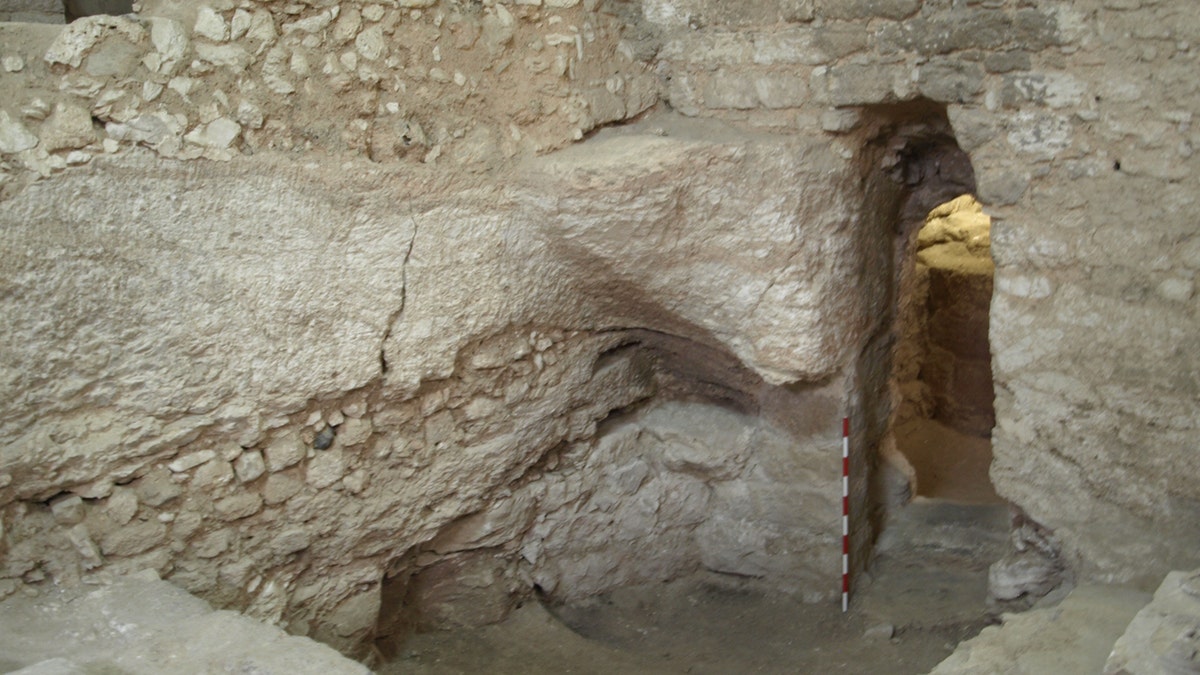Biblical war revealed on 2,800-year-old stone altar
2,800-year-old stone altar gives clues about the takeover of Ataroth in Jordan.
A U.K. archaeologist is shedding new light on a fascinating ancient site beneath a convent in Nazareth.
In his new book, “The Sisters of Nazareth Convent,” Ken Dark, a professor at the University of Reading, examines the archaeological history of the area beneath the Nazareth convent, which is said to be the location of Jesus’ childhood home.
The research notes that a partly rock-cut Early Roman–period house was found at the historic site, as well as evidence of Roman-era quarrying and burial, a well-preserved cave-church, and major surface-level Byzantine and Crusader churches.
The location of the cave church and later churches are believed to be linked to the ancient house.
'JESUS' FACE' UNCOVERED AT ANCIENT CHURCH IN THE ISRAELI DESERT
In 2015 Dark identified the first-century A.D. house within the crypt or cellar of the Byzantine church that was later built above it. The house and the remains of the Byzantine church are preserved within the Sisters of Nazareth Convent.

The first-century house at the Sisters of Nazareth site. (Copyright K.R. Dark)
“This is certainly a site which sheds a lot of light on what it was like in first-century Nazareth, and there is no reason to discount the possibility that the people who built the Byzantine church there might have been correct in identifying the first-century house as Jesus' childhood home,” Prof. Dark told Fox News, via email.
In his research, Dark explains that the first archaeological discoveries at the site were in the 1880s, which led to a series of excavations by the convent’s nuns until the 1930s. The site was then investigated by Henri Senès, a Jesuit priest and former architect based in the Pontifical Biblical Institute at Jerusalem. Senès worked there from 1936 and 1964, making detailed drawings of the structures discovered by the nuns, but did not publish any academic papers or research on the site, according to Dark. The site was then largely forgotten by experts.
In 2006, Dark set up a new project to reinvestigate the site and examine the earlier research. The archaeologist found that the first-century house on the site subsequently formed part of a quarry and then rock-cut tombs. “After burial ceased at the site, perhaps in the fourth century, a cave-church was constructed in the hill adjacent to the first-century house,” according to notes on the research emailed to Fox News. “A large surface-built church was built, probably in the fifth century, above both the first-century house and fourth-century cave church.”
LOST ROMAN CITY THAT WAS HOME TO JESUS' APOSTLES FOUND, SAY ARCHAEOLOGISTS

The first-century A.D. house showing one of its rock-cut walls. (Copyright K.R. Dark)
The large and elaborate church complex may have been the cathedral of Byzantine Nazareth and survived through to the fifth and seventh centuries, possibly described as the Church of Nutrition in “De Locis Sanctis,” a seventh-century work by the Irish monk Adomnan. “His description exactly matches the archaeological characteristics of the site,” Dark’s research says. “If so, the first-century house was that identified as the place where Jesus was brought up, judging from the cave-church.”
The cave-church is probably the one described in a fourth-century account of Nazareth by the pilgrim Egeria, according to the research. “There is no archaeological reason why that identification is impossible, although it is unable to be proved using any available archaeological or written evidence,” the research says.
CLICK HERE TO GET THE FOX NEWS APP

The first-century AD house showing the doorway and the only surviving section of the floor in front of it. (Copyright K.R. Dark)
Last year, in a separate project, the room venerated as the site of Jesus’ Last Supper was revealed in stunning detail thanks to remarkable 3D laser scanning technology.
Follow James Rogers on Twitter @jamesjrogers

